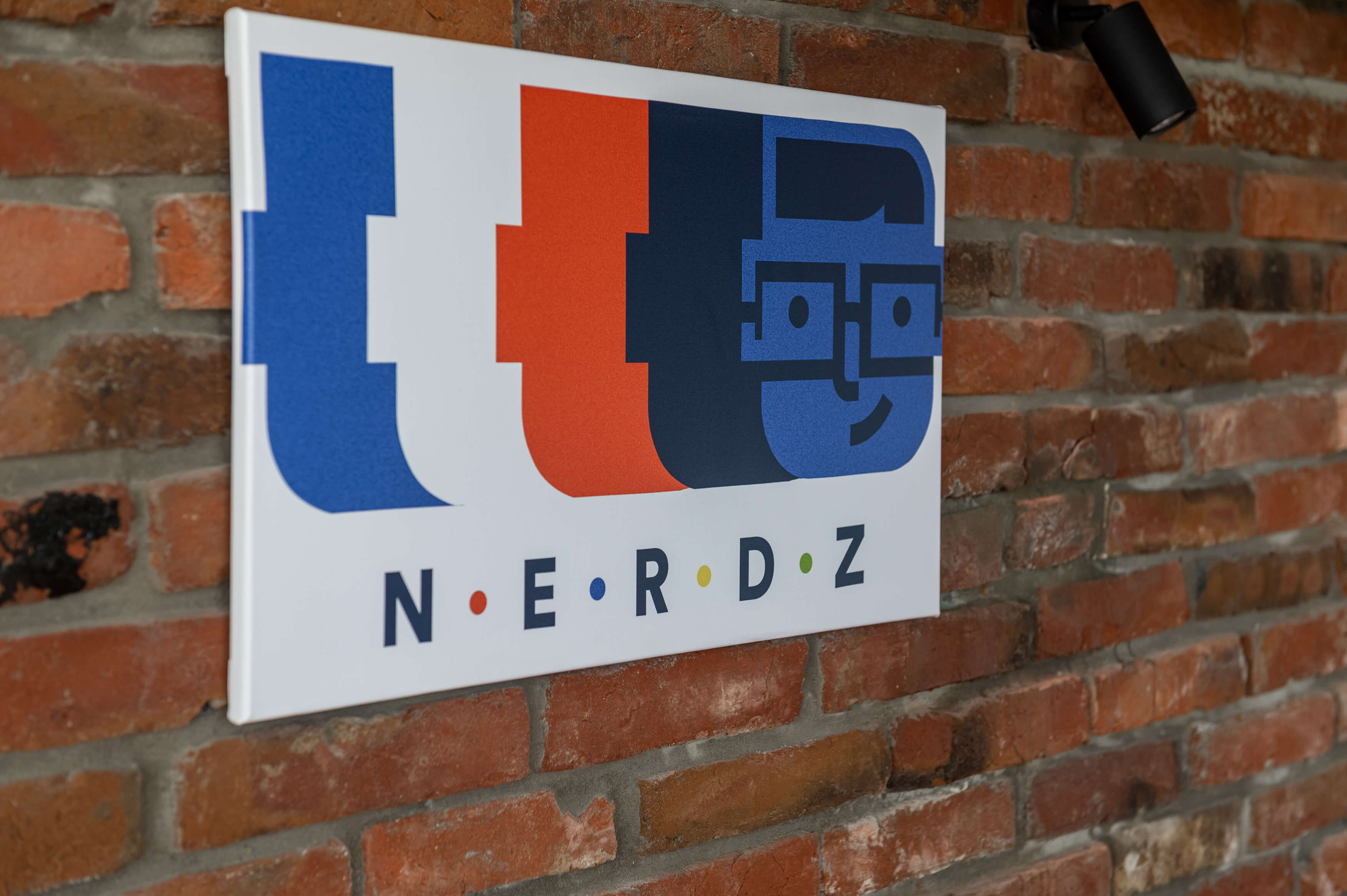От халепа... Ця сторінка ще не має українського перекладу, але ми вже над цим працюємо!

The team extension guide: how to do it properly

Andriy Tsebak
/
Co-Founder & BDM
7 min read
Contents:
- The basics: What is it and when should you use one?
- Setting up the team extension
- Why go for a team extension?
- NERDZ LAB development stories
In a perfect world, any tech-related business would get the software solution they wanted on the first attempt.
But unfortunately, this isn’t often the case, and the reasons vary:
- Some software development companies fail to understand the client and their needs and pain points
- Others lack the exact expertise needed for the project
- Some can’t dedicate enough time to complete the project
That is just a couple of examples of how things can go awry.
One way or another, businesses are losing time and money until they finally release their product or service. And the longer they take to do that, the less relevant and beneficial it may be.
Of course, there is a way to break this vicious cycle — by getting things that the current developer is struggling with done by other software developers. In the software development world, this is called software team extension.
So, what is a software team extension? How does it differ from traditional outsourcing? What are the benefits for the business, and the type of cases does it work well for? We’ll cover these questions and also share some stories about NERDZ LAB providing team extension services.

The basics: What is it and when should you use one?
So, let’s start with the fundamentals.
By classic definition, a team extension is a process of hiring one or several developers from a software development vendor with the required skills for a particular role or to close a specific gap in a project. Hence, the software development unit becomes complete, and the tasks fit the extended team.
With this model, you stay in charge of the new addition(s) to the team, giving you control over communication, flexibility, and making sure the tasks are fulfilled.
So what is the difference between a team extension and traditional outsourcing (although sometimes they can share software development pricing models)?
With a team extension, you take on a developer(s) for a particular role(s), set up a specific task(s), control the entire performance, take advantage of direct communication with them, and bear responsibility for your cooperation.
With traditional outsourcing, you give your project to a provider for development from the ground up. A project manager on their side is responsible for setting up tasks, performance management, and communication between you and the team.
See also: Accessibility in mobile development: Creating an app for everyone
When you might need a team extension
Skill gaps. To finish your project, you need particular expertise and tech talents that your team lacks.
Time constraints. You have a tight schedule to present your project to investors or release it to the market, but your team doesn’t have enough human resources. So you want to augment your team with additional members.
Unexpected issues. During the development stage or later, some difficulties arise that your current team can’t solve. So you need developers with the relevant expertise to help you.
Management crises. Your current team or management fails to understand your requirements, pain points, and needs — either partially or entirely. So you must search for additional team members to complete your project according to your vision.
Emerging technologies. At some point, you decide to add some new technologies to your project. As your current team is not familiar with these, you go and find talent with the relevant experience.
However, there may also be a combination of two or more reasons for choosing team extension services.
Setting up the team extension
A good start paves the way to success. The more clearly you establish the basics of the cooperation, the more efficient it will be. Below is a short but (we hope) robust action plan of how to search for and integrate an extended team.
Do your homework
Nobody knows your project’s needs and pain points better than you. So you, as the business owner or cofounder, are the best person to assess the situation and identify which skill and resource gaps need to be filled. Yes, that might seem obvious, but unfortunately, not every founder does this themselves, rather relying solely on their managers’ choices.
To make a considered choice about which software development company to cooperate with, look on Clutch to check out areas of expertise and ratings. It’s much easier to pick based on reviews and proven records than entrusting your project to a random freelance developer.
Participate in the hiring process
Usually, a business entrusts the hiring process to a software development company, from which they request specific human resources. However, if you want the right talent for the right role, you should take part in every step of the process. Even if you lack technical expertise yourself, you can share this responsibility with your in-house or outsourced tech lead or partially rely on the software development vendor’s technical expertise.
Engage your current team
Unless this is a case with poor team communication and management, your existing team might also know your project and all its pitfalls well. We recommend involving your team in every stage of the team extension process — from research to screening, interviewing, selection, and onboarding. The more they’re invested in the process, the higher the chances for the new team member(s) to fit into.
Give time to get up to speed
Let’s be realistic — no matter how skilled the talent(s) are, they won’t be able to jump straight into the project and understand all its peculiarities from the get-go. A proper introduction to the project and development process may take some time. So let your new team members find their feet then discuss a reasonable timeline and expectations (depending on the project complexity) and try not to overdo the micromanagement.
Revisit the workflow
Now that your team has extra members, you must review and rebuild the whole development structure and its stages (with sprints and iteration, as your team is most likely to use the Agile approach). This way, you ensure that all team members are at the same level. The clearer the picture is, the easier it will be to match the expectations with reality, and the more pleasing the results will be.

Why go for a team extension?
You always have a choice on how to get your project completed. But there are several benefits of extended team cooperation that mean it may be the right choice for your project. Let’s take a quick look at some.
Access to a vast talent pool
When you go for team extension services, you typically approach a software development company with the relevant request. It might be the same one that you outsourced your existing project to or a different one. As they have entry to their local talent pool, you’ll get a wide selection of required experts on your demand, in whose skills you can be confident.
Transparency
Team extension is all about clarity. Once you have defined the requirements for expertise and timelines to get started, the talent search and selection begins. You pay only for what you get: particular expertise for a specific role at a certain rate, and extra expenses like taxes and maintenance are on the vendor’s side.
Direct communication
Although the extension members will work as part of the team, they are firstly accountable and report to you (or maybe to a project manager on the vendor’s side if you prefer sharing and delegating this responsibility). Through straightforward communication with extra team members, you can see the whole picture, get total control over your project, and navigate if something goes wrong with their part of the work.
Overall process acceleration
With the extended team model, everything becomes faster. First, you don’t have to hold a long search and prescreening process because all the candidates will be selected according to your requirements. Second, you’ll have extra human resources to work on your project, which will hasten the development. And the third, and probably most important, is that you’ll be able to present your product to investors or release it to the market faster. This results in faster delivery to users and revenue.
Flexibility and scalability
You may decide to scale or add new technologies or enter different markets. The team extension model allows your project to change and grow easily. For that purpose, you can hire extra developers, and it won’t complicate the overall development process, as everyone will have set roles and an appropriate workload.

Check out how we have helped Subit, a SaaS solution for schools, with our team-extension services >
NERDZ LAB development stories
Actions speak louder than words. So, let’s take a look at NERDZ LAB’s track record in providing team extension services.
Sleep meditation and stories app
The client already had their iOS-based MVP from previous cooperation with another development team who unfortunately couldn’t devote the time required. So, they approached NERDZ LAB for team extension services. They required extra iOS developers and QAs for their meditation app. We revised the whole functionality, brought a single design with animations on all iOS-supported devices, and made accessibility features one of the priorities.
Team extension: 2 iOS developers and 1 QA engineer
Industry: Healthcare and wellness
Reason: Additional resources for the app development and improvement
As a result, the app became very popular among users with over 2 million downloads, was well-recognized by the media, and consistently gets high ratings on the App Store.
You can read the entire story of the cooperation here.
Rosecut, a digital wealth management platform
Rosecut — a digital wealth management platform for investment, spending, and income decisions — started growing significantly, and they decided to rebuild the whole platform from scratch.
The client requested NERDZ LAB’s team extension service for the whole design.
The scope was WebApp, Web portal, iOS, and Android apps. So we entered the project, catching up with the client’s in-house team with very restrictive time limitations. Throughout the main design development stage, we elaborated on reflecting financial activity charts, processing dynamically changing data, and ways to generate and keep analytical reports.
Team extension: 1 Front-end developer, 1 Business analyst, 1 Project manager;
Industry: Fintech
Reason: Additional resources for app development and improvement
At the end of the active development stage, the client received a clean and consistent product design on all platforms, with fast data uploads and room for analytical reports. Moreover, we established the direction for further growth.
The complete story is available here.
The blockchain data aggregation project
The client, one of the blockchain industry leaders, is working on their own APIs for blockchain data records fetching and came to us with a team extension request. They needed both additional resources and tech expertise to get their project completed. We revised the data processing algorithm and made numerous modifications to it, taking care of the data analytics tool as well.
Team extension: 2 Back-end developers, 1 Front-end developer;
Industry: Blockchain; Cryptocurrencies;
Reason: Additional resources and expertise for app development
Although the project isn’t released yet, the client can already see viable results. The data aggregation process is up to 3x faster and there is now an efficient admin panel for data, analytics, and reports.
The entire case study is available here.




